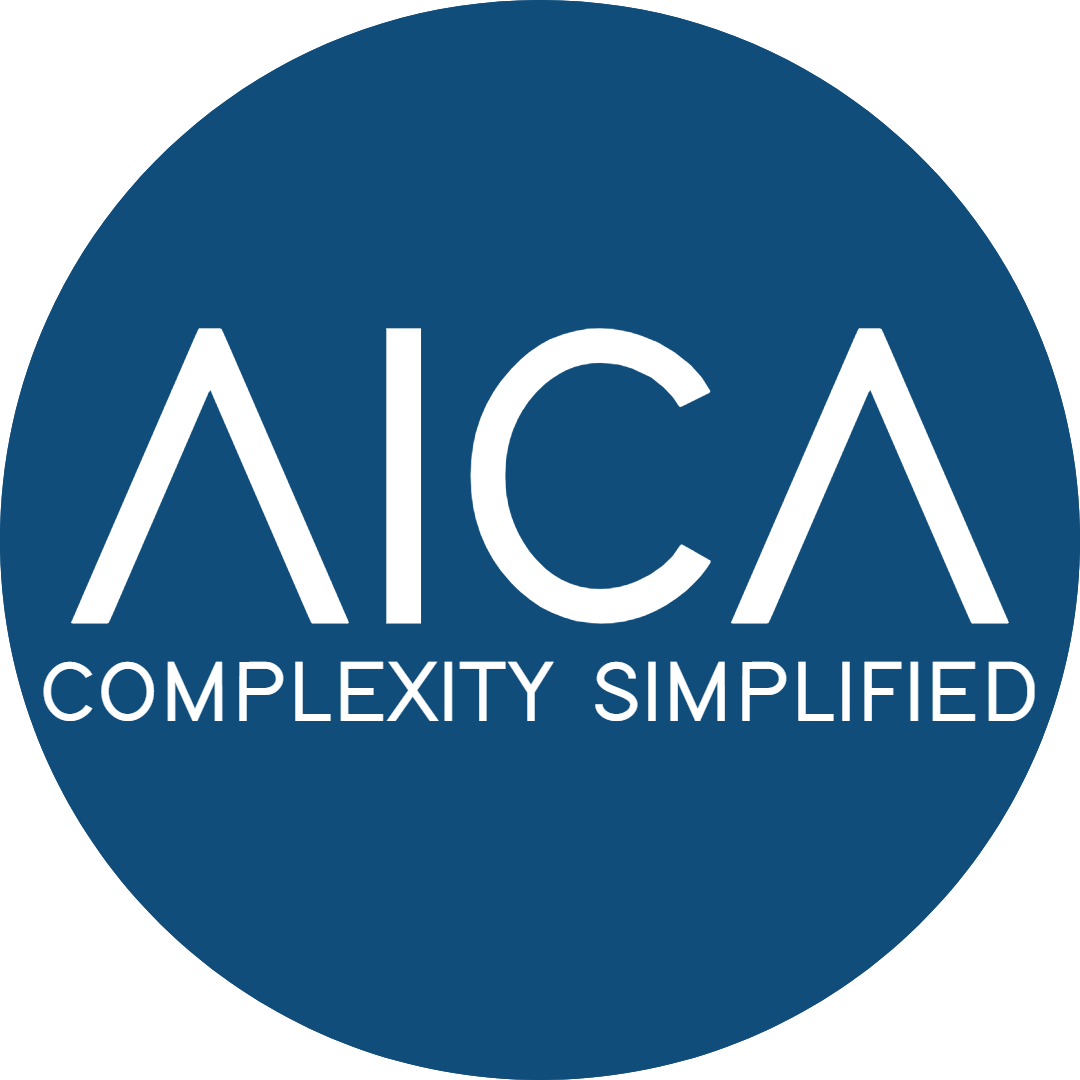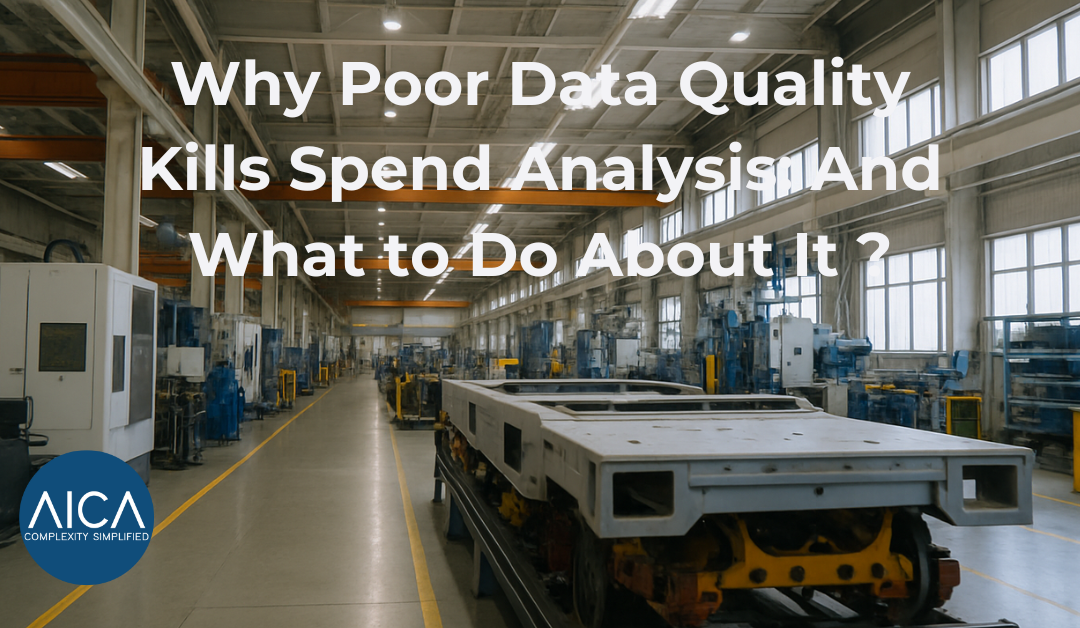Every procurement team wants better visibility into spend. The goal is simple: know where money is going, identify savings opportunities, and base sourcing decisions on facts, not assumptions. But without clean, structured data, spend analysis fails before it even begins.
Gartner’s Data Quality: Best Practices for Accurate Insights (2020) reports that poor data quality costs organisations an average of US$12.9 million per year. At AICA, we believe this figure is even higher in 2025, likely closer to 30% more, given the surge in reliance on data-driven decision-making. And that’s without factoring in the opportunity costs: poor data doesn’t just waste money, it weakens procurement outcomes and undermines organisations’ training of their internal AI models. After all, every company will need its own AI internally, and AI is only as strong as the data it’s trained on.
In procurement, the risks are particularly acute. Bad data undermines reporting, creates blind spots, and prevents teams from negotiating effectively.
According to Sievo’s The Challenge of Bad Procurement Data Quality (2024), “master data is a mess, and vendor registries are out of control,” and these are among the foremost reasons companies struggle to perform accurate spend analysis.
So why exactly does poor data kill spend analysis, and how can companies fix it?
The Problem: Dirty Data in Procurement Systems
Procurement data is often riddled with issues:
- Inconsistent item descriptions (“safety gloves” vs “industrial hand protection”)
- Duplicate supplier records (the same vendor listed under different names or spellings)
- Missing attributes (no part numbers, specifications, or manufacturer details)
- Unclassified line items buried under “miscellaneous” or “other”
When spend analysis tools ingest this data, the output is misleading. Instead of insights, teams get noise: fragmented reports, incomplete visibility, and incorrect assumptions about spend categories.
Why Dirty Data Breaks Spend Analysis
- No Reliable Baseline
If items aren’t classified consistently, procurement teams can’t group spend accurately. A company might think it buys five different types of fasteners from five vendors, when in reality, it’s the same product purchased from multiple sources. - Supplier Fragmentation
Duplicate or inconsistent supplier records distort spend visibility. Instead of consolidating spend with fewer vendors, procurement sees a scattered picture, weakening negotiation leverage. - Missed Savings Opportunities
Without clean data, opportunities for bulk buying, contract consolidation, or identifying maverick spend stay hidden. McKinsey estimates that companies can save up to 10% in procurement costs with better spend visibility, savings that dirty data makes impossible. - Weak Compliance & Governance
When line items aren’t classified to standards like UNSPSC or GS1, it’s impossible to measure category-level compliance, supplier diversity, or ESG commitments. Audits become harder, and risks increase.
The Fix: Clean, Classified, Enriched Data
So, what’s the solution? It starts with building structured, standardised procurement data as the foundation for spend analysis.
Step 1: Classification
Apply global taxonomies such as UNSPSC or GS1 GPC to all procurement records. These groups spend into meaningful categories, creating clarity across ERP, PIM, and procurement systems.
Step 2: Cleansing & Deduplication
Standardise supplier names, correct spelling errors, and remove duplicates. This ensures a single, trusted supplier record.
Step 3: Enrichment
Add missing attributes like specifications, manufacturer details, or part numbers. This turns vague entries into structured, analysable records.
Step 4: Sustainability
Embed these processes into procurement workflows. It’s not just about a one-off cleanup; spend data must remain clean and classified as new records enter the system.
How AICA Helps
AICA specialises in automating data cleansing, enrichment, and classification with our Agentic AI platform. Unlike generic AI, our models are trained on MRO and industrial procurement data, giving us the accuracy needed to handle complex item descriptions and supplier nuances.
Our solutions deliver:
- Around 90%+ accuracy out of the box
- Up to 70% cost savings compared to manual cleansing
- 90% time savings, processing millions of records in weeks rather than months
- Customisable classification to UNSPSC, GS1, ETIM, and other taxonomies
For procurement teams, this means spend analysis is no longer limited by data quality. Instead, they can trust their insights, negotiate with confidence, and unlock real cost savings.
Conclusion
Dirty data kills spend analysis by hiding the truth about where money goes. But with clean, enriched, and classified procurement data, organisations gain the visibility they need to control spend, enforce compliance, and drive savings.
Visit our website to learn how AICA can help transform your procurement data into a powerful driver of spend visibility and savings.
Copyright Reserved © AICA Data International Ltd 2025

